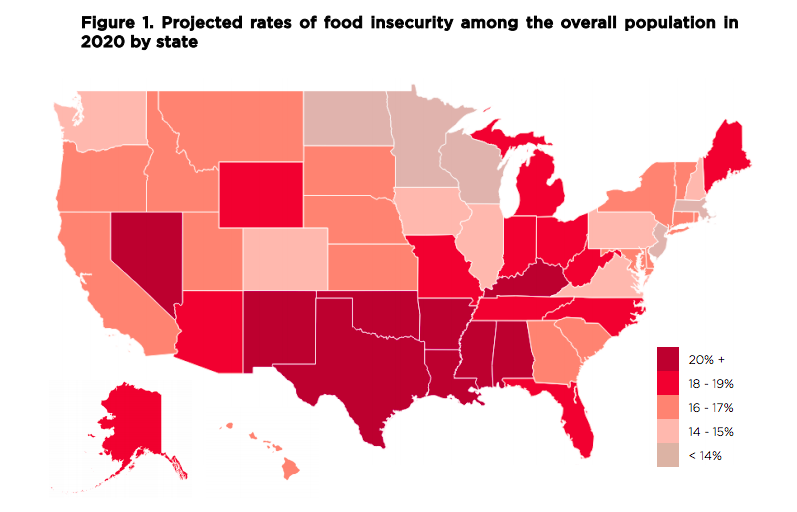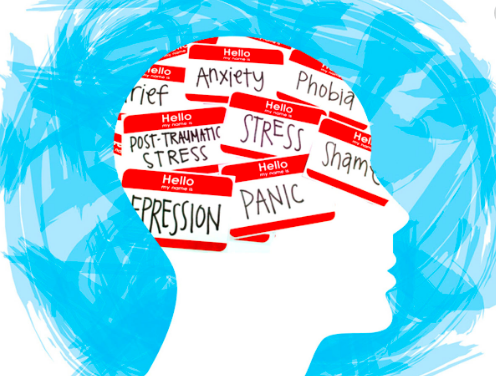Food insecurity is defined as the state of being without reliable access to a sufficient quantity of affordable, nutritious food. In the United States alone, more than 37 million people, including more than 11 million children, live in a food insecure household.
As the 2019 novel coronavirus continues to wreak havoc on vulnerable populations, it is predicted that the number of food insecure people in 2020 could increase by over 17 million, including nearly 7 million children. As a result, this would leave approximately 54 million people (1 in 6) and 18 million children (1 in 4) in the United States food insecure.

Unhealthy Bodies
Food insecurity can both exacerbate existing health problems and create entirely new ones. The cumulative effects of undernutrition on the human body are associated with lower nutrient intake, cardiovascular disease, osteoporosis, diabetes, hypertension, asthma, poor sleep outcomes, and bad oral health. Because of this, food-insecure households spend about 45% more ($6,100) on medical care in a year than people in food-secure households ($4,200). This reinforces a vicious cycle of poverty that is hard for most Americans to escape without assistance.
Unhealthy Minds

In addition to physical health, mental health problems often arise in food insecure populations. When hungry, our brains release the stress hormone cortisol, signaling the body to eat. But when there is little to no access to food, let alone healthy nutritious food, this stress hormone is prolonged, resulting in potential deterioration of the body and mind. This, in turn, furthers mental health struggles such as anxiety and depression that often accompany the stress of not knowing when someone’s next meal will be.
Unhealthy Children
For children especially, food insecurity provides a dangerous threat to their growing bodies. Children who have been severely undernourished in their first five years of life may experience challenging health effects, including stunted growth, increased susceptibility to illness, and underdeveloped brains. More specifically, children who are food insecure may experience iron deficiency, developmental risk and behavior problems, anxiety, depression, and attention deficit disorder. These health effects, in turn, result in a cycle of poverty, leading to poor school readiness and performance, and subsequent health disparities and poverty.
What Can I Do?
Although the negative health effects tied to food insecurity may seem overwhelming, there are many ways you can get involved in the fight against food insecurity in your own community:
- Donate to local organizations that include food insecurity in their mission. Nonprofits like Each Green Corner, or food banks like Second Harvest of Silicon Valley are great places to start.
- If you aren’t able to donate, consider volunteering your time or services to one of these organizations. At Each Green Corner, we are always looking for passionate people willing to extend a helping hand!
- Educate yourself. At Each Green Corner, the month of August is food insecurity month. Keep an eye out for more articles like this one on our website that dive into different topics pertaining to food access, distribution, and how to increase the flow of healthy fresh foods coming into your neighbourhood.
- Advocate for policy you believe in! This may look like calling your local representative about expanding school meal programs, or writing a letter to your governor about increasing minimum wage so that people are able to purchase healthier food options. Communicating with officials about what your community wants is the first step in creating change.
Written by Alexandra Grant-Hudd, Grant Writing and Development Intern



0 Comments